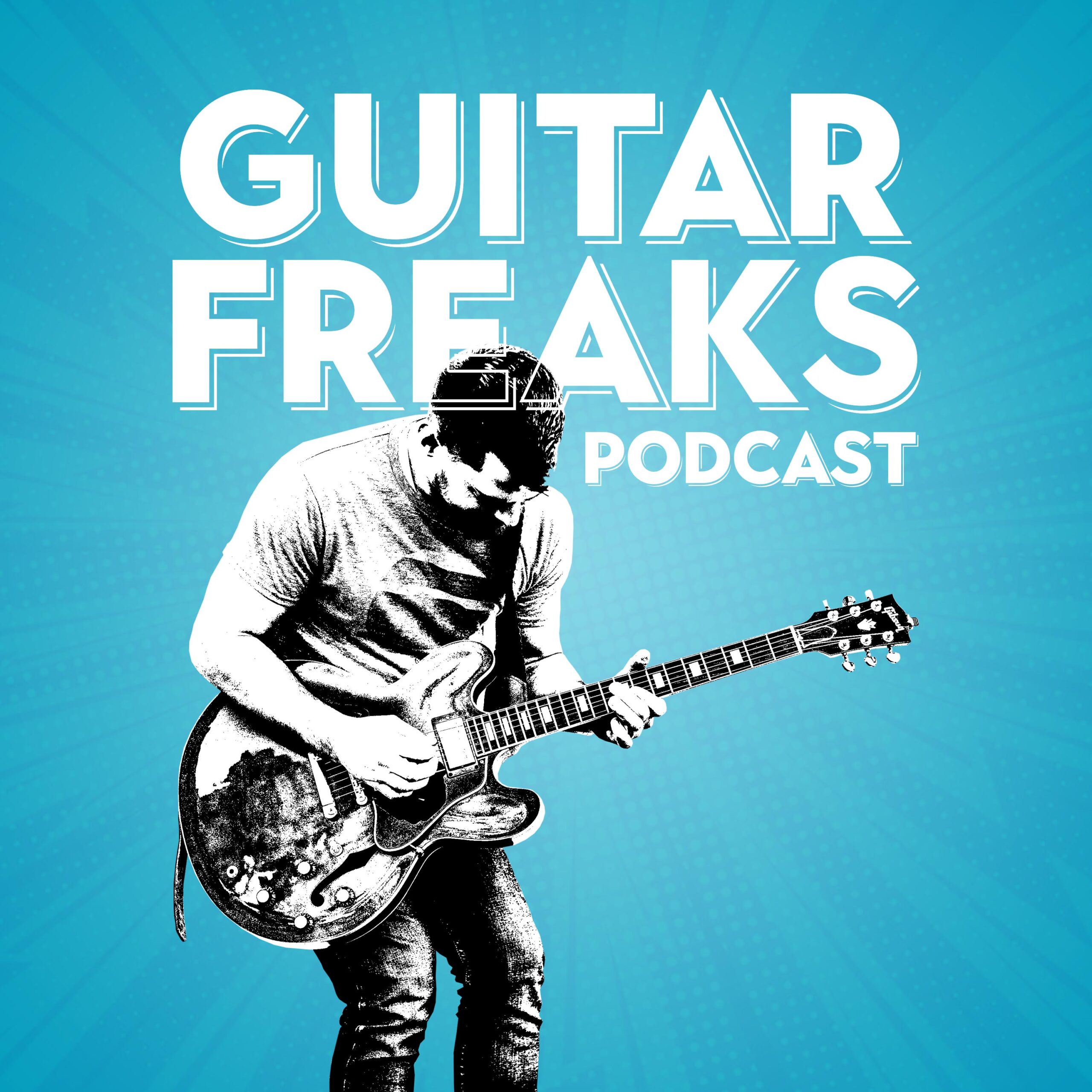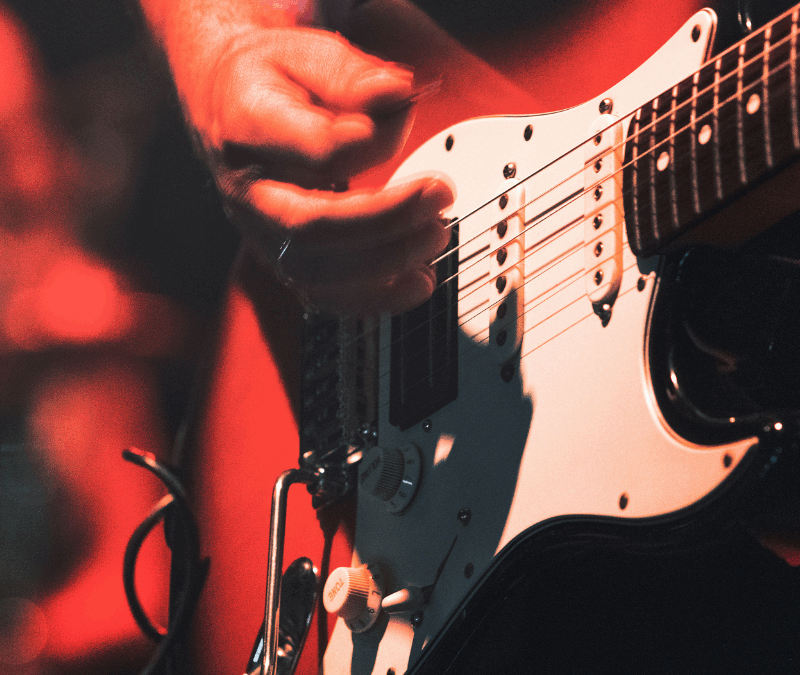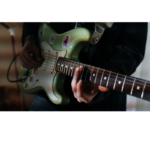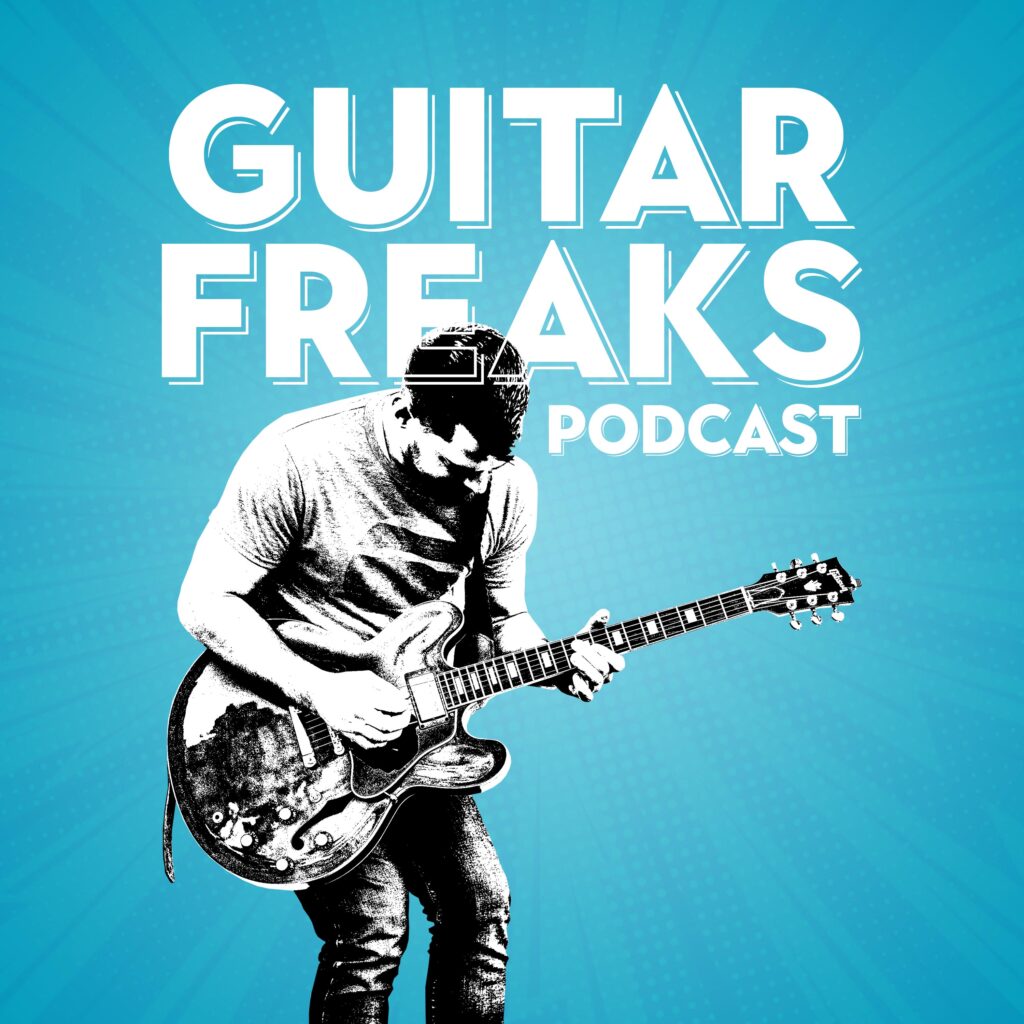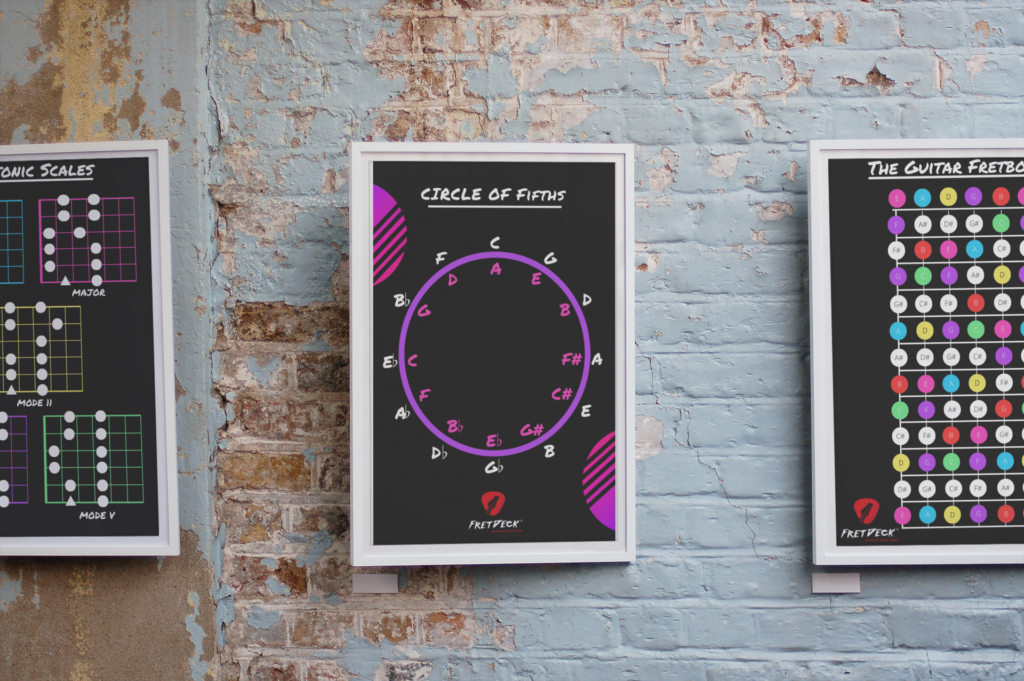If you’re like most guitar players, you probably learned your first chord before your first scale. Maybe it was a G chord or a D major, and it felt like magic. But as time went on, you ran into a problem: You learned guitar chords and scales separately.
You memorized chord shapes and maybe a pentatonic box or two. But when it came time to improvise or write music, something felt off. You had the tools, but they didn’t seem to fit together.
Here’s the truth no one tells beginners:
Scales and chords aren’t separate. They’re two sides of the same musical coin.
And when you connect them, the fretboard comes alive. Your solos make sense. Your rhythm playing becomes richer. Your improvisation finally feels musical.
In this guide, we’ll break down:
- What guitar scales and chords actually are (and how they connect)
- Why learning them together unlocks your fretboard
- 5 creative ways to fuse chords and scales in your playing
- How FretDeck and our Discord community help you master both faster
Let’s bridge the gap—and make your guitar playing whole again.

❌ Stop Guessing. Start Shredding.
If you’re still fumbling through scale patterns and box shapes… it’s costing you progress.
FretDeck™ is the no-fluff system that shows you exactly how to master the fretboard—fast. Early access.
⚡️ This isn’t for dabblers. It’s for players who want results.
👉 Click here to join the pre-launch now
Early access. Limited rewards. Don’t wait.
What Are Guitar Scales and Chords, Really?
Let’s strip it down to the essentials.
A chord is three or more notes played at the same time. They’re the vertical backbone of music.
A scale is a group of notes played in sequence. They’re the horizontal movement—melody, solos, runs, riffs.
But both chords and scales are made from the same notes.
The C major chord? It’s made from the 1st, 3rd, and 5th notes of the C major scale: C – E – G.
The A minor pentatonic scale? It outlines the A minor chord and adds color tones.
The real secret? Every chord lives inside a scale. And every scale outlines chords.
That means if you know your scales, you know where the chords live. And if you know your chords, you know which scales to use.
Why Most Players Stay Stuck Playing One or the Other
It’s not your fault.
Most guitar methods teach chords for rhythm and scales for lead. You learn one set of fingerings for rhythm, another for solos, and no one shows you how they connect.
But here’s what the pros do differently:
They see the chord inside the scale. They target chord tones inside the solo. They use scales to decorate their rhythm.
This is the difference between sounding like a robot and sounding like you.
Let’s fix it.
1. Learn Chord Tones Inside Every Scale
When you play a scale, not all notes are created equal. Some notes are chord tones—they match the underlying chord. Others are passing tones.
🎸 Try this:
- Play the A minor pentatonic scale
- Over an A minor backing track
- Emphasize the notes A (root), C (minor 3rd), E (5th)
Notice how it sounds locked in?
Now emphasize the non-chord tones—it sounds looser, less grounded.
🔥 Pro Tip: Chord tones are your home base. Passing tones are spice.
Use FretDeck to visualize these chord tones inside every pentatonic shape.
👉 Get FretDeck + Pentatonic Secrets Course
2. Solo Using Chords (Not Just Scales)
Here’s a wild concept: What if you used chords as your scale?
🎸 Try this exercise:
- Play an A minor chord, arpeggiated slowly (A – C – E)
- Now move to a D minor chord (D – F – A)
- Then a G major chord (G – B – D)
You just outlined a ii-V-i in A minor. That’s soloing with chords, not just over them.
🔥 Combine this with scale notes in between to sound fluid and intentional.
3. Use the CAGED System to Map Scales & Chords Together
The CAGED system isn’t just for chords.
It also maps where the major and pentatonic scales live around every chord shape.
🎸 Example:
- Play a C major chord in open position
- Now play the C major scale around that chord
- You’ll start to see patterns and overlap
🔥 This is the doorway to mastering the entire fretboard.
FretDeck helps you see the CAGED system in action.
👉 Download Now – FretDeck + Chord Secrets Bundle
4. Decorate Your Rhythm Playing With Scale Tones
Want to sound like John Mayer, Marcus King, or Hendrix?
They don’t just strum chords. They embellish them using scale tones.
🎸 Try this:
- Play a G major chord
- Add a hammer-on from open A to B on the 5th string
- Walk a little melodic run between G and C
You’re using the G major scale to spice up your chords.
🔥 This is where scales meet rhythm guitar. It’s tasty. And soulful.
5. Play Over Chord Progressions, Not Static Loops
Too many players get stuck playing scales over one chord. But music moves.
🎸 Try this progression:
- Am – Dm – E7
Now solo using A minor pentatonic. Then try outlining each chord as it passes.
🔥 This is how you tell a story in your solo—by changing with the chords.
Why FretDeck Makes All This Easier
🎯 The FretDeck system helps you:
- See scales and chords together
- Visualize chord tones inside every scale
- Practice smarter with guided prompts
- Master all 60 pentatonic scales in every key
It’s like having a teacher in your case—ready to go anytime.
👉 Join the Kickstarter + Get the Exclusive Deck & Practice Prompts

❌ Stop Guessing. Start Shredding.
If you’re still fumbling through scale patterns and box shapes… it’s costing you progress.
FretDeck™ is the no-fluff system that shows you exactly how to master the fretboard—fast. Early access.
⚡️ This isn’t for dabblers. It’s for players who want results.
👉 Click here to join the pre-launch now
Early access. Limited rewards. Don’t wait.
Join Our Guitar Freaks Discord (And Get the Free eBook)
Want real-time feedback? Want to learn phrasing, chord tone targeting, and improv techniques with other guitarists?
✅ Join the Guitar Freaks Discord ✅ Share your solos, get critique ✅ Get your FREE eBook: Fret Logic
👉 Join the Guitar Freaks Hangout Now
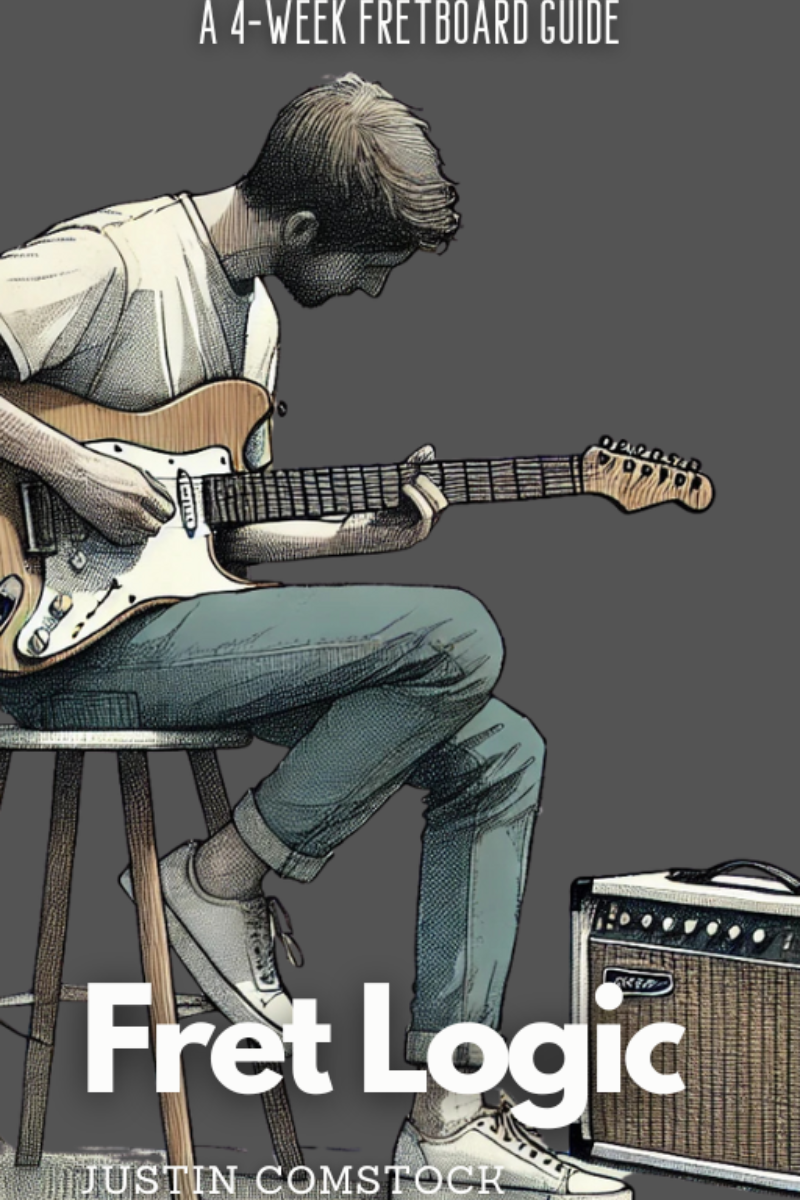
Join Guitar Freaks Hangout on Discord! 🎸
Get Fret Logic FREE!
Join the Guitar Freaks Hangout Discord and get exclusive access to my entire e-book, Fret Logic! Master the fretboard and elevate your solos with this comprehensive guide.
👉 Don’t miss out—join now and download your free copy!
Final Thoughts: Don’t Play One or the Other—Play Both
If you want your guitar playing to sound complete, you can’t treat chords and scales like separate tools.
They live together. They breathe together. And when you fuse them, your fretboard unlocks.
🎸 Use scales to build your chords. 🎸 Use chords to guide your solos. 🎸 Use both to tell your musical story.
🚀 Ready to sound more like you? 👉 Download FretDeck 🤝 Join Our Discord
And never look at the fretboard the same way again.
Also Read: 👉 Check out our full blog on Guitar Triads and how they supercharge your rhythm playing
